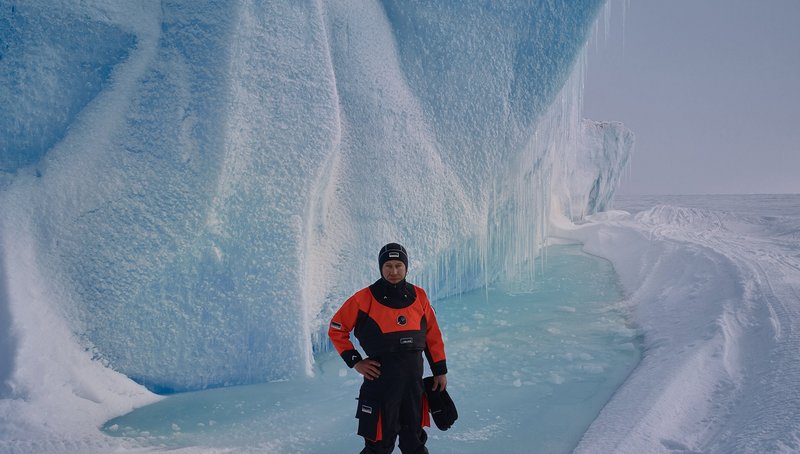ContiTech Uses Innovative Fabrics to Ensure High Level of Safety at Extremes of Heat and Cold
- “Next Generation” protective clothing material certified to fire protection standard NFPA
- Elastomer-coated heat protective materials with Conti Barrier System for extreme temperatures
- Materials for divers’ drysuits satisfy the most stringent safety and comfort requirements
- Concertina wall materials feature high level of fire protection and long service life
- Innovative surface materials for industrial and automotive applications
Hanover, April 2017. Materials from international technology company and industrial partner ContiTech ensure safety and security in a wide range of operating environments. For example, a chemical protection suit – manufactured using ContiTech’s innovative “Next Generation” fabric – is now certified to American fire safety standard NFPA. The flame-retardant material guarantees a high degree of safety in working environments where gases are generated and there is a fire hazard. It is therefore a reliable aid for firefighters, in industry and in shipbuilding.
Protective suits for which ContiTech supplies innovative materials are also available for work in extreme temperatures. They are absolutely ideal for preventing direct contact with a heat source. They provide brief protection even at 850°C. These protective suits are also designed for use at extremely low temperatures, offering protection even at -196°C briefly. All ContiTech fabrics are based on the Conti Barrier System, which uses high-performance elastomer coatings. Depending on the finish, this offers secure protection against chemicals, flames, heat or cold.
ContiTech is exhibiting these protective suits and other highlights at TechTextil (Hall 3.0, Booth D32) in Frankfurt am Main, Germany from May 9 to 12, 2017.
Very watertight in and under water
Extremely thin but, at the same time, as stable as a protective shield: ContiTech supplies materials for drysuits that offer optimal protection and a high degree of safety in and under water. This tough material – 0.5 mm thin and weighing about 450 g/m2 – remains watertight even when pushed to extremes. Comfort is also guaranteed, as the coated fabric is very flexible and has a pleasing feel. The innovative Condensation Control Technology (CCT) ensures optimal regulation of the body climate. This makes the material suitable as the basis for professional and leisure divewear.
Tough concertina wall materials for rail vehicles
Concertina wall materials for road and rail applications face stringent demands. As a flexible connecting system in articulated buses and between individual railway carriages, they are constantly in motion. In addition, they have to withstand stone chipping, UV radiation, rain and snow. All in a day’s work for ContiTech. The concertina wall materials satisfy demanding requirements – and that includes fire protection specifications. They have also been tested to European standard EN 45545-2 for use in rail vehicles. The materials are available in thicknesses from 0.8 to 3.0 mm, in different material finishes such as CSM or silicone rubber, and in several colors.
In addition to its classic finishes, ContiTech is also presenting a translucent variant that is already successfully in operation in buses. The composite material used, Conti Vitroflex, consists of synthetic rubber and fiberglass fabric. Not only is it light-permeable, it also amplifies the brightness thanks to its special refraction properties.
Innovative surfaces for a large number of applications
At its booth, surface specialist ContiTech is exhibiting its product and service portfolio for a wide range of industrial and automotive applications. In its Dynactiv Surfaces product family, the company is presenting dynamically active materials for surfaces especially in industrial environments.
Furthermore, at booth G46 in Hall 3, Hornschuch – the surface specialist acquired in March – is presenting materials for interiors in residential and contract areas and vehicles under the slogan “Surfaces that touch”. “The Pioneer”, its concept car, will demonstrate how surfaces can transform the character of automotive spaces. They will therefore provide a realistic look ahead to the impact that the new understanding of mobility will have on the design of the interior.

Wolfgang Reinert
Head of Media & Public Relations
ContiTech




